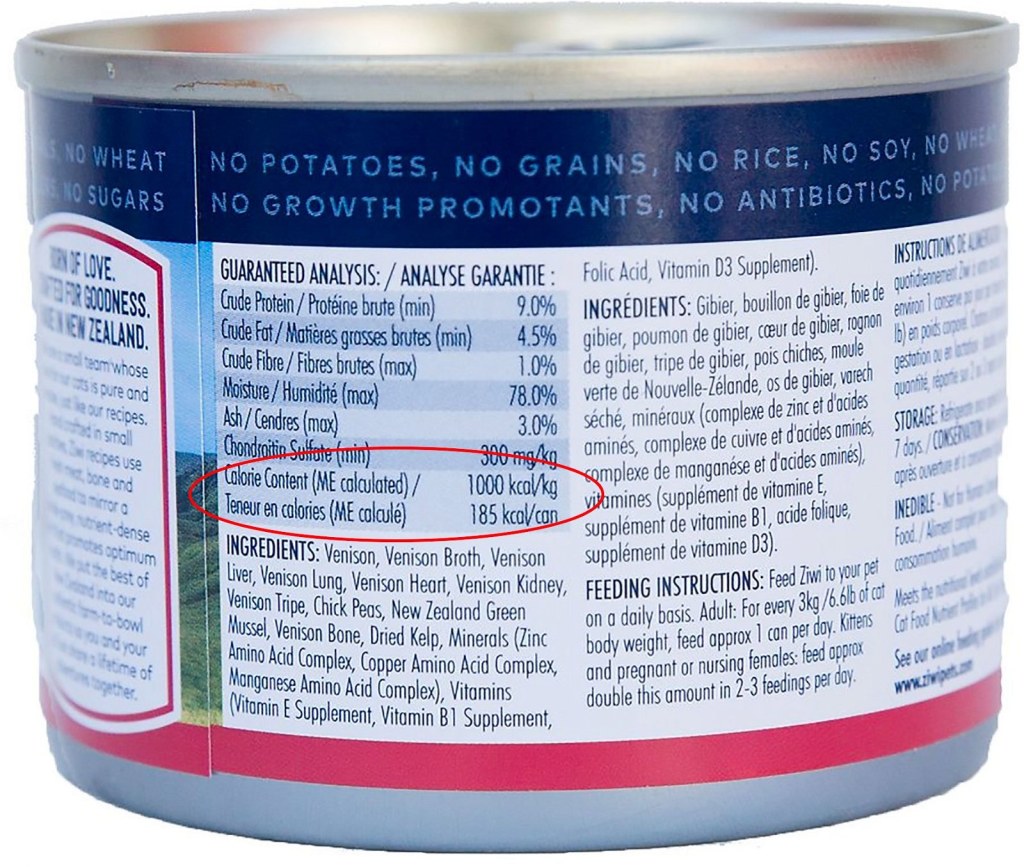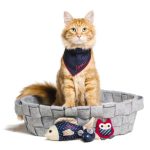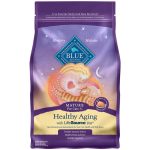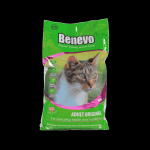Unlock The Power Of Canned Cat Food Nutritional Information: Discover Essential Insights And Make Informed Choices!
Canned Cat Food Nutritional Information: A Comprehensive Guide
Welcome, Cats Lover! As a cat enthusiast, you want to ensure that your feline companion receives the best nutrition possible. One of the popular choices for cat owners is canned cat food. In this article, we will provide you with all the essential information about canned cat food nutritional content, helping you make informed decisions for your beloved pet.
Introduction
Canned cat food is a convenient and nutritious option for cats. It contains a balanced blend of essential nutrients, including proteins, fats, carbohydrates, vitamins, and minerals. The manufacturing process involves sealing the food in airtight cans, preserving its freshness and flavor. With a wide range of options available in the market, it’s crucial to understand the nutritional information provided on the labels to ensure your cat’s health and well-being.
1 Picture Gallery: Unlock The Power Of Canned Cat Food Nutritional Information: Discover Essential Insights And Make Informed Choices!

Now, let’s delve deeper into the various aspects of canned cat food nutritional information:
What is Canned Cat Food Nutritional Information?
🔍 Canned cat food nutritional information refers to the detailed breakdown of the essential nutrients present in the cat food. It includes information about the percentage of proteins, fats, carbohydrates, vitamins, and minerals contained in a serving. This information helps cat owners understand the nutritional value and make informed choices based on their cat’s specific dietary needs.
Protein Content

Image Source: b-cdn.net
🔍 Protein is a crucial component of a cat’s diet as it supports essential bodily functions, including muscle growth and repair. Canned cat food often contains high-quality animal-based proteins, such as chicken, turkey, or fish. The protein content is typically listed as a percentage on the label, indicating the proportion of proteins in the food.
🔍 It’s important to note that cats are obligate carnivores, meaning they require a higher protein intake compared to other animals. Therefore, canned cat food with a higher protein content is generally recommended for their optimal health.
Fat Content
🔍 Fat provides a concentrated source of energy for cats and aids in the absorption of fat-soluble vitamins. Canned cat food often contains a moderate amount of fat to support overall health and maintain a glossy coat. The fat content is listed as a percentage on the label, indicating the proportion of fats in the food.
🔍 It’s essential to choose canned cat food with a balanced fat content, as excessive fat intake can lead to obesity and related health issues.
Carbohydrate Content
🔍 Carbohydrates in cat food primarily serve as a source of energy. However, cats have a limited ability to digest and utilize carbohydrates compared to other animals. While some carbohydrates may be present in canned cat food as fillers or binders, it’s crucial to ensure that the majority of your cat’s diet consists of protein and fat rather than excessive carbohydrates.
Vitamin and Mineral Content
🔍 Canned cat food is often fortified with essential vitamins and minerals to provide a complete and balanced diet for your cat. These include vitamins A, D, E, B12, calcium, phosphorus, and many more. The specific vitamins and minerals present in the food are listed on the label, helping you ensure your cat receives the necessary nutrients for optimal health.
Who Should Consider Canned Cat Food Nutritional Information?
🔍 Canned cat food nutritional information is valuable for all cat owners who feed their cats with canned food. Whether you have a kitten, an adult cat, or a senior cat, understanding the nutritional content will help you select the appropriate food for your cat’s age, size, and specific dietary needs.
Kitten Owners
🔍 Kittens have unique nutritional requirements to support their growth and development. Choosing canned cat food with the right balance of nutrients, such as higher protein and fat content, is crucial for their healthy development. The nutritional information enables you to make an informed choice and provide the best start for your furry friend.
Adult Cat Owners
🔍 Adult cats require a balanced diet to maintain their overall health and well-being. By understanding the nutritional information on canned cat food, you can select the appropriate food to meet their specific needs, such as maintaining a healthy weight and supporting their immune system.
Senior Cat Owners
🔍 Senior cats may have different dietary requirements due to age-related changes. Canned cat food with specific nutrients, such as joint support or reduced calorie content, can help address their unique needs. The nutritional information helps you identify the right food to promote their health and vitality in their golden years.
When and Where to Find Canned Cat Food Nutritional Information?
🔍 The nutritional information for canned cat food can be found on the product labels or the manufacturer’s website. It’s essential to read and understand this information before purchasing or feeding the food to your cat. You can find canned cat food in pet stores, supermarkets, or online platforms, ensuring easy access to a wide range of options to cater to your cat’s specific needs.
Why is Canned Cat Food Nutritional Information Important?
🔍 Canned cat food nutritional information is vital for several reasons:
Ensuring a Balanced Diet
🔍 Cats require a balanced diet to maintain their overall health and prevent nutritional deficiencies. By understanding the nutritional information, you can ensure that the canned cat food you choose provides the necessary nutrients in the right proportions, promoting optimal health.
Meeting Specific Dietary Needs
🔍 Cats may have unique dietary needs based on their age, size, activity level, or any underlying health conditions. The nutritional information helps you select canned cat food tailored to your cat’s specific requirements, ensuring they receive the right nutrients to thrive.
Avoiding Allergies or Sensitivities
🔍 Some cats may have food allergies or sensitivities to certain ingredients. By reviewing the nutritional information, you can identify potential allergens or ingredients that may trigger sensitivities in your cat and avoid them accordingly.
Maintaining a Healthy Weight
🔍 Obesity is a common issue among cats, leading to various health problems. By analyzing the nutritional information, you can choose canned cat food with an appropriate calorie content to help your cat maintain a healthy weight and prevent obesity-related issues.
Supporting Medical Conditions
🔍 Cats with specific medical conditions, such as kidney disease or urinary tract issues, may require specialized diets. The nutritional information allows you to select canned cat food formulated to support these conditions, assisting in managing your cat’s health effectively.
How to Interpret Canned Cat Food Nutritional Information?
🔍 Understanding the nutritional information on canned cat food labels is essential for making informed decisions. Here are some key points to consider:
Look for Complete and Balanced Formulations
🔍 The label should indicate that the canned cat food is complete and balanced, ensuring it provides all the essential nutrients your cat needs for their overall health. This statement is typically approved by regulatory bodies overseeing pet food manufacturing.
Check the Specific Nutrient Percentages
🔍 The nutritional information typically lists the percentages of proteins, fats, carbohydrates, vitamins, and minerals present in the food. Compare these percentages to the recommended values for cats of your cat’s age and size, ensuring they align with your cat’s dietary needs.
Consider Individual Cat’s Requirements
🔍 Every cat is unique, and their nutritional requirements may differ. Factors such as age, size, activity level, and any underlying health conditions should be taken into account when interpreting the nutritional information. Consult with your veterinarian for personalized advice, especially for cats with specific dietary needs.
Be Mindful of Ingredients
🔍 Along with the nutritional breakdown, review the list of ingredients to ensure they meet your cat’s dietary preferences and any specific requirements. Avoid ingredients that your cat may be allergic to or those that may trigger sensitivities.
Consider Your Cat’s Taste Preferences
🔍 While nutritional information is crucial, it’s also important to consider your cat’s taste preferences. Cats can be selective eaters, and finding a canned cat food that meets their nutritional needs and satisfies their palate is essential for ensuring they enjoy their meals.
Advantages and Disadvantages of Canned Cat Food Nutritional Information
Advantages:
1. Enhanced Nutritional Value
🔍 Canned cat food often contains a higher moisture content compared to dry food, which can help promote hydration in cats. Additionally, the canning process helps preserve the nutritional content of the food, ensuring your cat receives essential nutrients.
2. Palatability
🔍 Many cats find canned cat food more appealing due to its texture and aroma. The wide variety of flavors available in canned cat food makes it easier to cater to your cat’s taste preferences, encouraging them to eat and enjoy their meals.
3. Easy to Digest
🔍 The moisture content and texture of canned cat food make it easier to chew and digest, especially for cats with dental issues or older cats who may have difficulty eating dry kibble.
4. Variety of Options
🔍 Canned cat food offers a wide range of options, including different protein sources, flavors, and formulations tailored to specific dietary needs. This variety allows you to choose the best food for your cat, ensuring they receive the necessary nutrients.
5. Convenient Packaging
🔍 Canned cat food comes in individual servings, making it convenient for portion control and storage. The airtight cans help preserve the food’s freshness and flavor, ensuring each serving is as nutritious as the last.
Disadvantages:
1. Higher Cost
🔍 Canned cat food is generally more expensive per serving compared to dry cat food. If you have multiple cats or are on a tight budget, the cost of providing canned food exclusively may be a deterrent.
2. Shorter Shelf Life
🔍 Once opened, canned cat food needs to be refrigerated and consumed within a certain period. Unlike dry food, it cannot be left out for free-feeding throughout the day, requiring more frequent monitoring and potential waste if your cat doesn’t finish the entire serving.
3. Potential Odor and Mess
🔍 Some canned cat foods have a strong aroma that may be unpleasant for some cat owners. Additionally, the texture and moisture content of canned food may result in messier eating habits, requiring regular cleaning of feeding bowls and surrounding areas.
4. Limited Dental Benefits
🔍 While the texture of canned cat food is easier to eat for cats with dental issues, it lacks the mechanical cleaning benefits provided by dry kibble. If your cat requires additional dental care, your veterinarian may recommend incorporating dental-specific products into their routine.
Frequently Asked Questions (FAQs)
1. Is canned cat food better than dry food?
🔍 Both canned cat food and dry food have their advantages and disadvantages. Canned cat food offers higher moisture content, enhanced palatability, and easier digestion, while dry food is more convenient and beneficial for dental health. Consider your cat’s specific needs and consult with your veterinarian to determine the most suitable option.
2. How much canned cat food should I feed my cat?
🔍 The recommended feeding guidelines vary based on your cat’s age, weight, and activity level. Follow the guidelines provided on the canned cat food packaging, but remember that individual cats may have unique dietary requirements. Regularly monitor your cat’s weight and adjust the portion size accordingly to maintain a healthy weight.
3. Can I mix canned cat food with dry food?
🔍 Yes, it is possible to mix canned cat food with dry food. This combination can provide added variety and nutritional benefits. However, ensure the total calorie intake aligns with your cat’s needs to prevent overfeeding and maintain a healthy weight.
4. Can I transition my cat from dry food to canned food?
🔍 Yes, you can transition your cat from dry food to canned food. Gradually introduce the new food by mixing increasing amounts of canned food with decreasing amounts of dry food over a period of seven to ten days. This gradual transition helps prevent digestive upset and allows your cat to adjust to the new diet.
5. Are there any specific dietary considerations for cats with medical conditions?
🔍 Cats with medical conditions, such as diabetes, kidney disease, or urinary tract issues, may require specialized diets. Consult with your veterinarian to determine the most appropriate canned cat food formulated to support your cat’s specific condition.
Conclusion
In conclusion, understanding the canned cat food nutritional information is crucial for providing your feline companion with a balanced and nutritious diet. By considering the protein, fat, carbohydrate, vitamin, and mineral content, you can make informed choices that promote your cat’s overall health and well-being. Remember to consider your cat’s individual needs, taste preferences, and consult with your veterinarian for personalized advice. With the right canned cat food, you can ensure your beloved pet receives the optimal nutrition they deserve.
Final Remarks
Disclaimer:
This post topic: Cats



